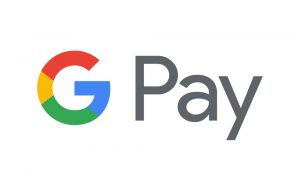Say goodbye to Android Pay and Google Wallet, and say hello to Google Pay.
Alphabet Inc.’s Google unit on Monday announced a rebranding of its disparate online payments services under the single moniker Google Pay. The new branding’s scope is so broad that even the function within Chrome Web browsers that automatically fills in a consumer’s payment information comes under the new banner.
The move to Google Pay, announced in a blog post by Pali Bhat, Google vice president of product management for payments, comes almost seven years after the launch of Google Wallet, the company’s original mobile-payment service that was renamed Android Pay in 2015. The Google Wallet name was then affixed to the company’s person-to-person payments services. The company’s e-commerce payment service, Google Checkout, launched in 2006. That name was phased out in 2013.

Bhat’s post mentions no operational changes to the payments products. Users of Tez, a mobile wallet Google launched in India in September, also will see the Google Pay branding, Google says.
Google’s move might clear up some of the confusion surrounding its payments services and their capabilities, analysts suggest.
“Google’s branding of its payments products has grown increasingly confusing over the years,” Jordan McKee, principal analyst for payments at 451 Research, a New York City-based firm, says in an email to Digital Transactions News. “The lack of unity and consistent messaging has created challenges for consumers in understanding which Google payment product to use, not to mention how, where, and why to use it.”
Now, with the latest branding move, “it remains to be seen if the Google Pay brand will enhance consumer understanding and therefore adoption of Google’s payments services, or if it will only add another layer of confusion,” McKee says.
Low adoption rates bedevil all three of the major mobile-payments services from technology firms: Apple Pay, Samsung Pay, and the newly-renamed Google Pay. An estimate from Juniper Research in 2017 said Apple Pay had 45 million worldwide users, compared with 18 million for Samsung Pay and 12 million Android Pay users.
Apple Pay is the leader among U.S. banks and credit unions, too. Among 388 financial institutions that already offer or plan to offer mobile payments, 46% already offer Apple Pay, while 53% plan to, according to a report from the Federal Reserve Bank of Boston. For rival “Pays” Google Pay and Samsung Pay, from Samsung Electronics Co. Ltd., the corresponding percentages are 22%/52% and 21%/49%, respectively.
“Their previous moves were rebranding confusion,” says Richard K. Crone of San Carlos, Calif.-based Crone Consulting. “Google Wallet was for person-to-person payments and Android Pay was for purchases, and they didn’t really put any marketing muscle behind either one of them.”
With Google Pay as an umbrella brand, Crone expects Google could fare better when consumers and merchants review their payments options. Google is by far the most well-known brand in the Alphabet portfolio, he says. “This move recognizes the importance of Google putting all their payment capabilities under one leading brand,” Crone tells Digital Transactions News.
Unifying the payments capabilities under one brand name also may make it easier for Google to benefit from burgeoning consumer use of person-to-person payments, he says. As consumers use the P2P service, they may leave funds there that can later be used to make purchases using other Google Pay capabilities, he says.
This could aid adoption because of the “flywheel effect of leveraging P2P in one umbrella brand,” Crone says. “The move taps into the value of sending money to build the active user base for Google Pay, for all payment types and purchase venues.”
That could help Google compete against Apple Pay Cash, Crone says. “Extending easier payments to retailers’ point of sale will be a natural progression in the same way as Apple Pay Cash, as they will create a new tender type for spending the idle balances accumulated from P2P transactions between individuals,” he says.





